In the 19th century the historian Thomas Babington Macaulay visited the chapel of St. Peter ad Vincula in the Tower of London and recorded his impressions in the first volume of The History of England from the Accession of James the Second published in December 1848.
He wrote,
‘I cannot refrain from expressing my disgust at the barbarous stupidity which has transformed this interesting little church into the likeness of a meeting house in a manufacturing town. In truth there is no sadder spot on earth than this little cemetery.’
It was perhaps this protest that awakened the desire to address the sorry state of the chapel and restore it to its original condition.
In the early part of 1876, the Constable, Sir Charles Yorke submitted a proposed restoration plan for Queen Victoria’s consideration. The goal was to architecturally restore the chapel to its original state and arrange it as a place of worship for the use of residents and garrison of the Tower. In August of 1876, work commenced.
In various places the pavement of the chapel was broken and uneven. Once the pews were removed it became clear that a safe foundation was needed before the new pavement could be laid. It was also decided that a ‘heating apparatus’ should be fitted to the church.
After removing the stones of the pavement, it was discovered that the resting places of those who had been buried in the chapel in the sixteenth and seventeenth centuries had been desecrated.
An explanation might lie in the following:
‘When the Tower ceased to be a residence of the sovereign or a state prison, the chapel of St. Peter appears to have gradually come to be regarded too much in the light of a mere ordinary parish church, in which the interment not only of those who had lived in the Tower, but even of residents in the neighbourhood, was freely permitted.’
In some instances, coffins had been broken up and the bones scattered to make room for a new burial. It was therefore decided that immediate steps should be taken for ‘removing the remains into the crypt’.
A proposal was once again submitted for approval by the Queen and was sanctioned with the express condition that
‘the greatest care and reverence should be exercised in this removal, and that a careful record should be kept of every sign of possible identification which might come to light.’
These conditions were observed and all human remains found beneath the floor of the chapel were collected, enclosed in boxes and an inscription added. Coffins that were found in tact were removed to the crypt.
In October 1876, attention turned to the restoration of the chancel where it was known that Queen Anne Boleyn, Katherine Howard, the Dukes of Somerset, Northumberland and Monmouth were buried.
It was hoped that this area could remain undisturbed and that the new pavement could be laid over the top but in the end this was impossible because in two places the pavement had sunk and was thought to be hollow beneath.
So it was decided to remove the paving in order to rectify the sinking, with minimal disturbance to the ground. Every spadeful of earth would be carefully examined with a sieve and any remains found reinterred on the same spot.
The work would all be carried out under the supervision of a team of six people including the Resident Governor of the Tower, Colonel G. Bryan Milman, C.B.
Doyne C. Bell documented the findings in Notices of the Historic Persons Buried in the Chapel of St. Peter Ad Vincula in the Tower of London (1877).
Since the chancel had been less disturbed than other areas of the chapel, it was hoped that some of the remains of those buried in the sixteenth century would be in situ.
Mr Bell, Secretary to Her Majesty’s Privy Purse, consulted various historical authorities and produced a plan showing ‘the relative positions in which it was believed these persons had originally been buried’.
On the 9th November 1876, the pavement above the spot marked on the plan as the final resting place of Queen Anne Boleyn was lifted and the earth removed to a depth of two feet. In Bell’s account he notes that ‘it had certainly not been disturbed for upwards of a hundred years.’
According to Bell,
‘At this depth the bones of a female were found, not lying in the original order, but which had evidently for some reason or other been heaped together into a smaller space: all these bones were examined by Dr Mouat, who at once pronounced those to be of a female of between twenty-five and thirty years of age, of a delicate frame of body, and who had been of slender and perfect proportions; the forehead and lower jaw were small and especially well formed.’
Bell continues his account by noting that ‘the vertebrae were particularly small, especially the joint next to the skull and so bore witness to the Queen’s ‘lyttel neck’. Dr Mouat (Local Government Inspector) asserted that the bones all belonged to the one female and had been buried for upwards of three hundred years. No other female bones were found in this area.
All present were convinced that these were the remains of Queen Anne Boleyn who, according to Bell, was recorded as being buried in front of the Altar by the side of her brother George.
George Boleyn’s remains were not discovered during the restoration and so were either removed or buried further towards the north wall, an area that remained undisturbed.
Close to where the female remains were found, were some male bones ‘belonging to a man of considerable stature, and of about fifty years of age.’ The committee concluded that these were the remains of Edward Seymour, Duke of Somerset (c. 1506 – 22 January 1552) who along with John Dudley, Duke of Northumberland (1504 – 22 August 1553) was said to have been buried between the two Queens, Anne Boleyn and Katherine Howard in front of the altar.
In his account Bell notes that two feet beneath the female remains believed to be Anne Boleyn’s, was discovered the lead coffin of Hannah Beresford, interred in August 1750. He believes that it was around this time that Anne Boleyn’s remains were gathered together.
Included in the account are Dr Mouat’s notes about the bones believed to be the remains of Anne Boleyn.
The bones found in the place where Queen Anne Boleyn is said to have been buried are certainly those of a female in the prime of life, all perfectly consolidated and symmetrical, and belong to the same person.
The bones of the head indicate a well-formed round skull, with an intellectual forehead, straight orbital ridge, large eyes, oval face, and rather square full chin. The remains of the vertebrae, and the bones of the lower limbs, indicate a well-formed woman of middle height, with a short and slender neck. The ribs show depth and roundness of chest. The hand and feet bones indicate delicate and well-shaped hands and feet, with tapering fingers and a narrow foot.
They are all consistent with the published descriptions of the Queen, and the bones of the skull might well belong to the person portrayed in the portrait by Holbein, in the collection of the Earl of Warwick.
View the portrait here.
Dr Mouat also concluded that her height might have been about 5 feet, or 5 feet three inches and after carefully examining the fingers, asserted that no malformation was found.
The description offered by Dr Mouat is very much in keeping with what we know of Anne Boleyn’s appearance with the exception of one comment – ‘a rather square full chin.’
So were the bones discovered in fact the remains of Anne Boleyn?
Well, according to Alison Weir – no!
She states that Bell’s plan showing ‘the relative positions in which it was believed these persons had originally been buried’ was ‘highly speculative and inaccurate’ (Weir, pg. 324) on account that he did not specify what historical sources he consulted and in Weir’s opinion would only have had access to the chronicler John Stow’s account that asserted that, ‘There Lieth before the high altar in St. Peter’s Church, two dukes between two queens’.
Weir goes on to question the square chin and notes that Anne’s authenticated portraits depict her with more of a ‘pointy chin’. She also points out that no painting of Anne by Holbein is known to have survived and that the portrait that Dr Mouat refers to is an eighteenth century copy of Holbein’s sketch of a lady who was only identified as Anne in 1649 (pg. 325).
Dr Mouat records a ‘short and slender neck’ but Francesco Sanuto, a Venetian diplomat, described Anne as having a ‘long neck’ and being ‘of middling height.’
There is also the issue of age. The bones found are said to belong to a woman aged between ‘twenty-five and thirty years of age’ yet most modern historians agree that Anne was born c. 1501 and so would have been around 35 years old at the time of her death.
Before we make any final conclusions it’s necessary to return to Bell’s account of the other persons found buried in the chancel.
On November 11 1876, the excavation committee returned to the Chapel and removed the paving above where the Duke of Northumberland was thought to have been buried. There they discovered the ‘male bones of a person about fifty years of age’. Bell recorded that a large skull was found with the remains and notes that the Duke’s head was not left to rot on London Bridge, rather buried with his body. The committee concluded that these were the remains of John Dudley, Duke of Northumberland.
They then discovered the remains of two females in two distinct groups in a ‘south-east direction and nearer to the wall of the chancel’ believed to belong to a woman of about 30 to 40 years of age and another of ‘considerably advanced years.’
Bell noted that
‘These groups had been much disturbed and many bones are missing: the younger female had been of rather delicate proportions, the elder had been tall, and certainly of above average height.’
The committee concluded that these were the remains of Lady Rochford and Margaret, Countess of Salisbury.
They considered that the younger female could be Katherine Howard but because she was said to have been ‘very small in stature’, concluded that it was more likely the remains of Lady Rochford.
Katherine Howard’s remains were not found and the explanation offered was that because Katherine was very young at the time of death, her bones were not yet ‘hard and consolidated’ and so the lime used in the interments turned her bones to dust.
On Friday 13th April 1877, the committee met once more and seven cases containing the remains of those exhumed from the chancel on the 9th and 11th of November were reinterred where they had been found.
‘These remains had been soldered up in thick leaden coffers, and then fastened down with copper screws in boxes made of oak plank, one inch in thickness. Each box bore a leaden escutcheon, on which was engraved the name of the person whose supposed remains were thus enclosed, together with the dates of death, and of the year (1877) of the re-interment.’
The cases were then buried about 4 inches beneath the surface, the earth filled in and concrete spread over them and there they remain to this day.
Alison Weir believes that the bones identified as belonging to Anne Boleyn might in fact be those of Katherine Howard who was aged between 16 and 23 years in 1542 and ‘miniatures of whom by Holbein show her with what could be a jutting square jaw’ (Weir, pg. 326).
She also states that the remains identified as Lady Rochford, belonging to a woman of 30-40 years and of ‘delicate proportions’, are the remains of Queen Anne Boleyn.
‘Thus we can be almost certain that Anne’s memorial stone does not mark the last resting place of her actual remains, and that she lies beneath Lady Rochford’s memorial’ (pg. 327).
So much about Anne Boleyn’s life is debatable or a mystery but in my opinion the mention of a square chin is not enough to discount the committee’s findings. And no, Anne Boleyn was probably not between 25 and 30 years of age when she died but by the same token, Katherine Howard was not yet 25.
From Anne’s portrait it is clear that she did have an intellectual forehead, an oval face, slender neck, delicate and well-shaped hands with tapering fingers and it’s possible that Dr Bell had consulted documents now lost to us when he compiled his plan.
I feel honoured that I will be able to pay tribute to this remarkable woman when I visit the chapel on the 19th May. Being close to Anne Boleyn’s physical remains is incredibly moving.
I would love to hear what you think about the restoration and the discovery of Anne Boleyn’s remains.
I would also like to mention that as the Chapel of St Peter ad Vincula approaches it’s 500th anniversary in 2012, the Constable’s Fund and the Choral Foundation, supported by Historic Royal Palaces, are looking to raise £1.5 million by 2014 ‘to restore the Chapel to its former glory through a number of sympathetic changes which will make a real difference to the way in which the Chapel is used and protected’.
For more information visit The Chapel of St Peter ad Vincula Appeal Page.
Sourceshttp://www.age-of-the-sage.org/history/historian/Thomas_Macaulay.html
Bell, C. D. Notices of the Historic Persons Buried in the Chapel of St. Peter Ad Vincula, in the Tower of London: with an account of the discovery of the supposed remains of Queen Anne Boleyn, 1877.
Ridgway, C. The Exhumation of Anne Boleyn.
Weir, A. The Lady in the Tower: The Fall of Anne Boleyn, 2009.

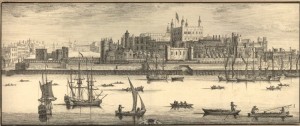
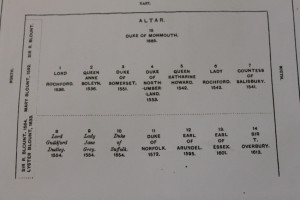
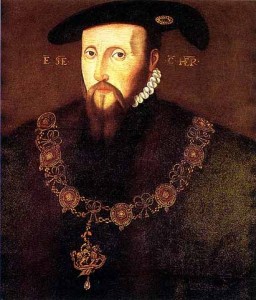
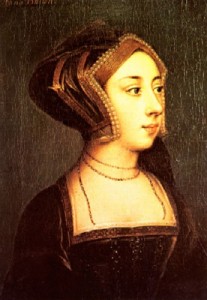
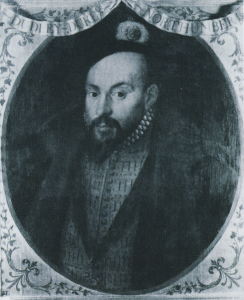
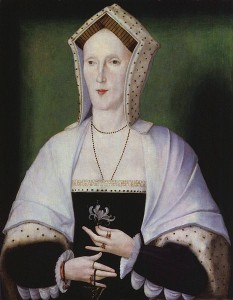
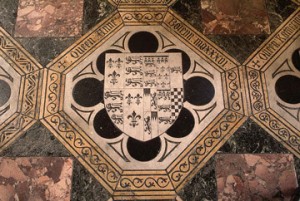
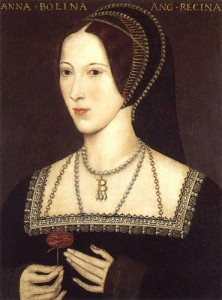







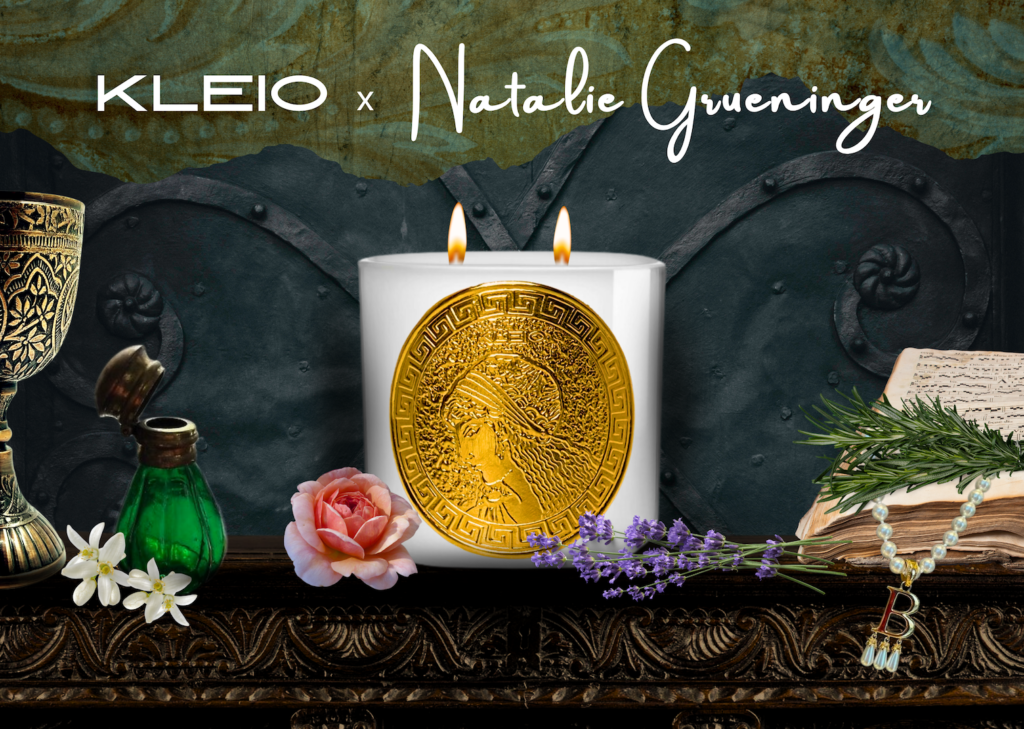













Wonderful article, Natalie, Doyne C Bell’s book is one of my favourite sources and I’m inclined to believe that the remains the Victorians found were those of Anne Boleyn. They dug her up where they expected to find her.
Thanks Claire! Unless, some new information is discovered, I agree that the bones found by the committee were those of Anne Boleyn.
I was at the Chapel on May 19, 2014. It was very moving to be in the Chapel where this lady had been hastily buried. The Chaplain told us that there were three queens lied under the alter in the front of the Chapel. Queen Anne Boleyn, Queen Catherine Howard, and Queen Jane Grey (the often forgotten queen of England). he explained that the remains were identified by their clothing as well. Whether she is there under the Alter or somewhere else-She is there at the church. God rest her soul.
It would be a real bummer if Anne Boleyn lay beneath Lady Rochford’s plaque, what with Lady Rochford being a clue piece of Anne’s downfall. That would certainly add insult to injury.
But I agree that we should not take the evidence so lightly. The truth is, what we know of Anne Boleyn has always been a he said-she said thing, and her remains appear to be no different than that, all we have are speculations from the letters of her contemporaries, and the same goes for everything Weir states.
Yes, it is very complicated. Can history ever be objective? Is it possible to write about an event without colouring it with our tastes and beliefs? I hope that George Boleyn lies close to his beloved sister. Natalie
Great article, Natalie! I’d love to visit at midnight with a psychic–I believe in that stuff. Thanks for a terrific article!
Thanks Anne! You know I believe in that stuff too 🙂 I am so excited about visiting the chapel on the 19th May! I hope you are recovering well x
Changes in calendar of 1752. I think it was 9 or 11 days which were removed from the calendar in September of that year and new year began in January instead of march. In which case 19 may 1536 will be 9 or 11 days either side of 19 may in subsequent years!!!! I wud love to know the exact equivalent date I have puzzled over it for years. Can anyone help?
It would be fabulous wouldn’t it!
I can help you there. According to the Swiss Ephemeris for May 1536, you have to add 10 days to get from the Julian to the Gregorian calendar date, which brings you to the 29th of May.
Weir is always so adamant about her conclusions without a whole lot to back up her opinions. The length of the neck? Did she not also take into consideration that she was beheaded? Perhaps not all the verterbrae survived under such circumstances? As to the square chin. I have a fairly pointed chin but if I feel my jaw bone through my skin, it is squared off. Its a skull so you cannot see how the flesh on her face would have been.
Yes, I was surprised that there was no mention of trauma to the neck, of course the skeleton was not complete. The chin is tricky because what might be a square jaw to you, might not be so square to me! A little subjective I think. Thanks for commenting! Natalie
I really have to agree with Mad_Twinkie about the Lady Rochford business, but since the publication of Julia Fox book on Jane Parker, Lady Rochford, a lot of people have softened their “opinions” on her. I am still not quite so convinced, but this another topic for another day.
I agree with you about the feeling you would have while being near the remains of Annne (and I thought I was moved by the water pump at Helen Keller’s home at Ivy Green), and would just stand there and stare, and stare and be mesmorized, but at the same time thinkng as well. It is kind of like being in shock, only with the feeling of being near her. I don’t know how to explain it. I do hope that Weir is wrong, but I do have to admit, I don’t read her. Since I discovered Eric Ives, and that’s after reading books and articles, etc. (my majors in college and graduate school were Europrean History with an emphsis on the Reformation, on which I studied and wrote a lot about Anne) on Anne, I find Eric Ives the most reliable, and every primary source in their is noted as well. Claire Ridgway has worked her way through them and that must have been a gargantum job. May I call you Natalie? If so, you have enlightend me a great deal with this article. Thank you! WilesWales
I am glad you enjoyed the article WilesWales and of course you may call me Natalie 🙂
Wouldn’t it be something if they had Anne’s scull to recreate her face. To actually see what she really looked like!!!! That would really get to me . Such interesting history, I love everything Tudor. Love to read all the articles, so interesting.
If only! What I wouldn’t give to see her face..
Oh me too, love Ann to bits, God rest her soul. Hope she’s with Elizabeth at last x
Thank you, Natalie!
I never thought about what blondcurls has replied, and yes it would be. I watched a National Geographic episode where they took what is “believed” to be the Shroud of Turin, and not only recreated what would be (from what little they had) Jesus looked like. They even, with the aid of computers, of course, made a head that was incredible and matched every detail from the evidence they had.
Yes, this would be great for Anne Boleyn! It would be fantastic! Now you have me pondering and wondering! Thank you! WilesWales
Pheewh!! I sometimes think the Victorians were history ‘Vandals’, not intentionally, but their heavy-handedness have cost us dearly in some cases, this being one of them. Did you know that they used to have plain Georgian silverware, down to the smallest spoon, engraved with over-the-top ornate, (they did like ornate!) patterns, much to the horror of our antique collectors/dealers, as it can devalue an item quite extensively, not to mention remove the historical purity of it…shame on them 🙂 but they did leave us with another fascinating period of history.
I don’t think we will ever know who-is-who under those plaques in the Chapel, unless the scientists are allowed to exhume the bones and apply the great reseach techniques that there are now, but even then that doesn’t guarentee a conclusive answer. I am in two minds about this, one says yes, it would be great to know, the other says no, leave these poor souls alone, they have been disturbed enough. We know to within a few feet or less where Anne is, does it matter we don’t know the exact spot when we go in to pay our respects. Her spirit will know, and will forgive our unsurity in her resting place, I feel Anne and George will be happy in the knowledge that we seek andknow the truth of her story now, and be at peace. Yes I believe in all that ‘psychic’ stuff too!!
Great too hear that the Chapel will be recieving a ‘facelift’ in the future, no doubt the restorers will be a lot more careful than our Victorian friends….
Thank you so much for sharing this. I, too, am very moved by the thought of being so close to the actual remains of Queen Anne. But I do wish that all this damned controversy would come to an end. Before I get on to my real point something in the historian’s math doesn’t add up for me. I’ve heard Anne’s year of birth being speculated as 1501, 1507, or even later. I believe it’s very possible that she was born before 1507, and I could argue on and on about it all I like, but none of us really know as no birth record for her exists.
Another thing that has always bothered me is the rather extreme controversy over Anne’s looks( meaning the many portraits). Would it really be too hard to put those arguments to rest for once, exhume her remains, use the amazing scientific technology we now have, and finally be able to gaze on the true face(as I know have been done on other cases)of Anne Boleyn?
The Queen does not allow such investigations.
The Queen must allow science to do such and also do DNA samples. There is much controversy over certain facts and documents of Robert Dudley and Elizabeth Tudor with a certain time frame of facts and documents. They had a son who was carefully hidden and later went to Spain in adulthood. Important for DNA to test for his family bloodline. And his connection to Elizabeth as well as the bloodline that is alive today.
We will never find out where was she really buried and that’s killing me! Everything about her is fascinating: what is the year when she was born, in what circumstances became Queen, has she ever loved the King, why did the king kill her even when he knew she was inocent, where did they burie her and what kind of person has been when she was still alive, because after her death we all know that she became an IMMORTAL QUEEN!
Henry killed a great many people, many of which were probably innocent.
I have read about this period in England’s past and am saddened to think of a tyrant running around and at a whim having people put to death for his luxury. I did not know Anne but the way she led Henry on was the most honorable thing from all of his wives perhaps Anne of Cleaves was an innocent, She behaved well so to stay in England was good for her. Anne / Anne were both graceful in their complete opposite situations. As we look back on The Kings I do not know how anyone could respect Henry for anything he did. I feel that he tarnished the English and the royalty of that country.
There’s always the same names bandied as the wronged wives of Henry Eighth! The only really legitimate Queen was Catherine of Aragon. Henry is believed now to have been a paranoid Schizophrenic. A murderous tyrant of the worst kind. He shamed the English crown, and was the son of a Welsh usurper. Henry’s biggest crime was against Margaret Pole- Countess of Salisbury, who was beatified by a Pope.
I agree. I am a Ricardian, he is the Good King, and history would have been complete different with him.
I feel with Catherine of Aragon, she had to endure so much, and I feel very much with Anna of Cleve, because she came from my country, so I feel somehow related to her. What a sad life, sent to such a mad ugly piece of scum.
That guy destroyed every life around and in generations. His daughters could never live and act as normal human beings, too, and Mary Stuart had to pay for his insanity, too, and and and.
Historians are in agreement that Henry VIII did not suffer from paranoid schizophrenia, unlike a predecessor, Henry VI! It is, however, accepted that he had type II diabetes, because Henry displayed many of the classic symptoms of that disease. Mental impairment and mood swings are both late-stage symptoms of diabetes. It is also argued by some that he suffered from syphilis, although there is no contemporary evidence to suggest he suffered from it, unlike Francis of France, who is known to have had syphilis. The question of whether the queen consorts after Catherine of Aragon are legitimate wives of Henry is one of the key arguing points of the entire schism between the Catholic Church and The English Crown. An entire book could be written, and indeed several have been, about this question. It will suffice to say that parliament sided with Henry, and as the highest legal authority in the land at the time, parliaments position is the one that is accepted. Regarding the points Seminele makes about his daughters, both his daughters, born in wedlock, came to rule England as Mary I and Elizabeth I. Mary reverted England back to a catholic country, then her half-sister Elizabeth reversed those changes and continued the reformation. I would say both of those two lived and acted as they wished, Mary marrying Philip of Spain, and Elizabeth never marrying at all, despite intense pressure on both from their respective governments. Your point on Mary Stuart is irrelevant here, she was executed in 1587, forty years after the death of Henry VIII.
Thank you for this very interesting article!
Yes, I think this could very likely have been Anne Boleyn, too. The fact that the bones were lied again in the grave after disturbing without a new coffin points into this direction too, I think. She had died on the scaffold, so I think she was not as ‘precious’ in the eyes of the 18th century as Catherine Howard would have been.
I wonder if nobody looked if there was a sign on her neck if the person was beheaded?
Yes, it would be so great to mold her face! I would love to see different investigations on the remains in the royal graves, especially the remains of the two children from which it is said they had been the princes in the Tower, but your Queen does not allow it. I think it is rather sad!
But here are some former reign families too which does not allow such investigations for different reasons (one, for example, is known for a possibly reversed prince, the real child, so it is said, has been killed by the conkubine of the father. Later the right prince appeared again and was killed after a short time, very likely by a Lord Stanhope. It is the story of Kaspar Hauser, perhaps you may know it. So this is not only a british phenomen 🙂 )
Sorry for my english and greets from Berlin 🙂
Good Afternoon, The remains of Queen Anne Boleyn bring interest to her unusual life and death. Yet, her religious background should move people also, since this is one part of her life that needs more discussion and research. Why did Archbishop Thomas Crammer place Anne in the clutches of Henry VIII? Anne Boleyn had a tremendous influence on the education of young girls and her writing when found may do the same today.
The awful day when her husband did not show up for a day that was to be spent with his gorgeously dressed and educated wife, what dread did Anne experience?? EFC
I remember visiting the chapel a few years ago, and the yeoman warder who gave us the talk on the history of told us that after the execution of Anne it was realised that no one had thought to order a coffin for her, and she was placed in a hastily emptied arrow container, the only reason she was able to be placed in it was because a) she had been small of stature and b) because of the decapitation. He said she was interred in that same box, no fancy coffin forthcoming. So sad.
Were any photos taken at the time of the exhumation/excavation? I would think that with the computerization of forensic anthropology, facial reconstructions could probably be done using photographic images.
It would be interesting if when they do renovations in the church they could open to coffins buried under the alter and us modern techinques to study the bones and use reconstructive methods on the skulls to get a true likeness of the people buried there
Not certain if feasible but it would be a fascinating inquiry to determine Anne Boleyn’s Rh status via DNA testing . There has been speculation that the reason for her subsequent miscarriages following an initial successful birth could be explained by her Rh status.
Why was there no coffin/burial plans ranged for Anne Boleyn? With Cromwell’s famous attention to detail, and his meticulous planning, could it really have just been an oversight? Or a deliberate insult?
I have seen a photo, the bodies were removed and placed in a storage area, they then called a crypt im not sure who is right or wrong about the skeletons, maybe it doesant matter because Anne is still with her brother and cousin, it was sad because Anne and the others were mostly innocent im not sure why they placed her body in an arrow chest but she was of lesser rank than her husband or it could have been an insult im not sure maybe they were just in a hurry to get rid of her
Some historians think that Anne was born in 1507, rather than 1501. If they’re correct, then she would have been aged 28-9 at the time of her execution.
Really interesting article. I was at the Chapel Royal last Saturday and it is a fascinating place. Wherever Anne lies, she was certainly and continues to be a controversial figure. Have to say though, I’ve never come across anyone who thinks she was guilty of the adultery she was accused of.
I agree with the previous writer. Ms Weir makes a lot of sweeping judgments and then covers all by saying it’s “almost certainly” true. If you count them up, she says “almost certainly” about 100 times in Lady in the Tower.” One thing that seems to be overlooked is the way that Anne died. Being beheaded with a razor sharp sword, in less than one second, would leave a clean cut, indeed. Someone should have been evaluating the neck bones for evidence of this type of cut. Surely, being hacked at with an axe would leave a whole different “signature.” Now, with the concrete over the bones, we may never get another look. It’s all sooo frustrating since we want to know about this for sure, and we probably never will. And it IS important !!! I would like her spot to be recognized accurately — not guessed at.
I do feel with modern day scientific advances, that bone damage from the executions might have left at least some microscopic traces of evidence…i.e Anne Boleyn was beheaded by sword, the others by Axe…thus creating different slash/chopping signatures. I also believe that the sword stroke would of come from a different angle than that of the axe used for the other executions. I do feel that if the bones…i.e neck/vertebrae areas were tested under today’s more modern and recent scientific studies, and a proper process of elimination used, that identification might possibly, and finally be ascertained. The bodies I feel deserve their rightful identities, out of respect for who they were.
i already reached these conclusions, and almost 6 months ago. I am taken aback to see my own thoughts, slightly re-worked, and given under someone else’s name. Yes, it does bother me. They are my original thoughts. Isn’t it nicer and more honest to just say “i agree with her.” ????? Also, i have not used foul language or “raised my voice”, so i don’t see why my follow-up thoughts have to be deleted. So anyone can copy anything and the writer is not permitted to feel offense or comment on same ? Very unfair.
Dear Rena, I’m very sorry that you feel offended but I do have to say that I’ve read “your theory” many times before and I feel that your tone is very aggressive, hence why I deleted your original comment. For decades people have been requesting that the bones in the Tower’s chapel be properly examined, for the very reason that you and many others before you have specified. I don’t think that Darren Burtt intended in any way to offend you, in fact, it’s possible that he didn’t even read your comment before posting his own, in which case claiming that he “copied” or “plagiarised” is simply unfair. Once again, I apologise that this incident has left you so upset but please keep in mind that while I value respectful debate and historical discussions, I do not publish any comments that are offensive or unfairly accusatory in nature. Best wishes.
I stand by everything i’ve said in response to Darren’s post. I know i am right and i will not change. I have a funny feeling about the site, however, which is supposed to have some neutrality, but is clearly promoting his point of view and dismissing mine. Why would anyone want to write here if they can’t get fair treatment ? And, yes, he read my comment. He could not miss it they are practically touching…..the thoughts and the phrasing are very similar. There is not another post in the whole list that sounds like that. You’re trying to tell me the sun is blue and i will not accept that. It would say a lot more for you if you gave the other person as vigorous a defense as you’ve given Darren. ps people do tend to get irritated when they are ignored. I have no aggression in me and believe you’re going too far with such a drastic, over the top description. People are discussing here…..no one’s been called a foul name or “yelled ” at.
Dear Rena, you are not being ignored and I am not promoting anyone’s point of view. I am simply doing my job by moderating comments and trying to maintain a respectful discussion space. This is the last comment of this nature that I will be publishing. If you’d like to continue discussing history then that is absolutely fine, otherwise, I ask that you please refrain from posting any other comments on this thread. Thank you.
I totally agree.
The trouble is that some of the vertebrae were missing. The pathologist who examined the bones talks about “the remains of the vertebrae” and does not mention any signs of trauma to the ones he examined, so that suggests that those vital ones could not be examined, I feel.
I don’t know why, but the way that she was buried is very upsetting to me. I know that she was executed and therefore not considered eligible for a decent burial, but it was just so indecent the way they disposed of her. After all that has been written about her being vindictive and jealous, it seems like she still didn’t deserve this type of treatment, and perhaps that is why we consider her final resting spot such a lonely and sad place
Although a proper coffin was not provided for her burial, she was buried by her ladies and so was treated with respect. They took care of her remains, she was in good hands.
The chapel is beautiful and I’m so glad that she is there because for me it is far more peaceful than Westminster Abbey. It’s not a lonely, sad place, it is a place of worship and is so peaceful.
I hope one day to be able to visit. Not only her resting place but all the places associated with her. I cannot imagine being able to stand so close to her.
History knows that these people were executed so that Henry VIII could get rid of his wife to marry Jane Seymour because he wanted a son.
A great unjust was done to her. Her bones need to be found and her and her brother need to be buried properly. It’s the decent thing to do.
They can test her DNA with the bones of the man buried there with her and the present Queen is a descendant of of Mary Boylen the sister of Anne and King Henry VIII who gave him 2 children.
Everyone who has posted has very interesting comments . I was wondering about the flower pattern on the sides of this page,and it there a name for this? I see Forget-Me-Nots, Violets, and the remaining I am unable to identify. Thank you for any information!
I’ve read that Anne Boleyn was said to have a sixth finger on one hand but nothing above mentioned this?
Hi Julie, the story of a sixth finger was started by Nicholas Sander, an Elizabethan recusant activist, who despised Elizabeth and was doing everything to try and sully her name. This was never mentioned during Anne’s lifetime by even her enemies, which strongly suggests there was no sixth finger.
I hope that the remains in the chapel will be tested for their DNA so that they can finally Rest In Peace. ???
I read (I can’t remember where) that indicated that Anne’s remains were identified by the Victorian excavators finding an arrow chest with some of her clothing caught between the lid and the body of the chest. Have I mis-remebered this?
Reading along, I find it most important to be buried in sacred ground, and I would prefer the smaller chapel as well above WA, because of the quietude and serenity of the place. I do think the clothing got caught between the lid and the chest. The attentive and thoughtful person to bring in the flowers every year in May, is probably the reincarnation of a close family member, where I would think of Anne’s mother Elizabeth at the time, and you are lucky to have had such loving persons around you in spite of all.